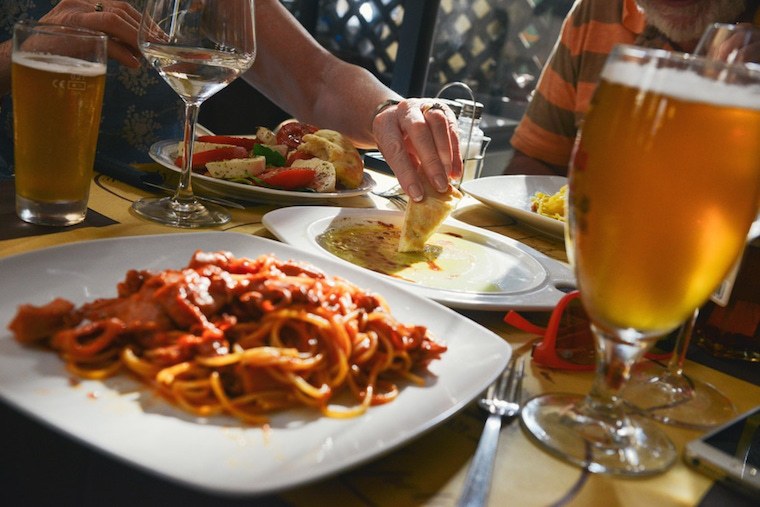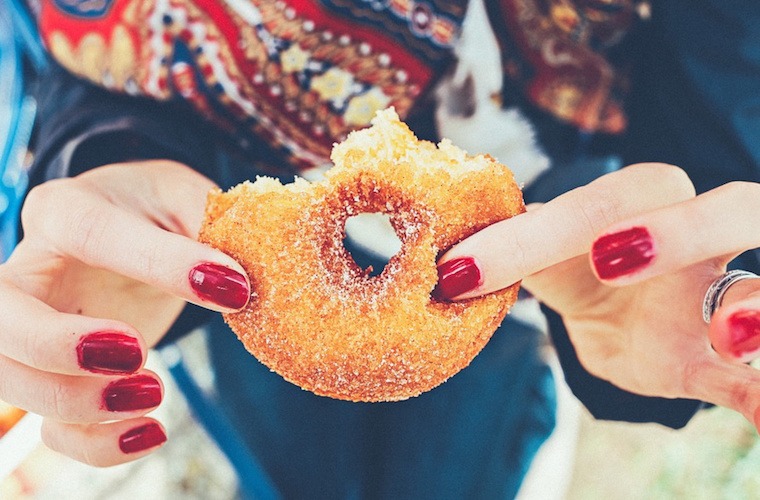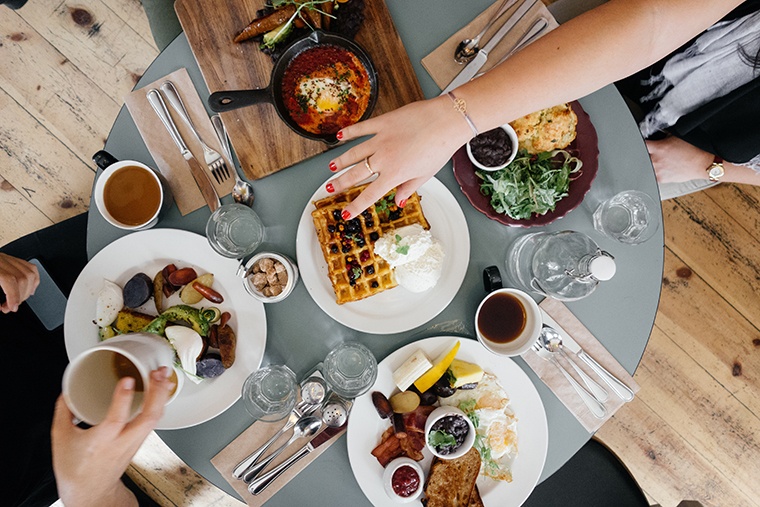Is the 80/20 Diet Actually a Diet?
Gisele Bündchen and Tom Brady rarely eat cooked food, Miranda Kerr tries to eat organic most of the time, and Olivia Munn reserves a small portion of her mostly plant-based plate for meat and bread—which might sound like three markedly different approaches to eating, but they all call their meal planning by the same name: the 80/20 diet.
So what exactly is the 80/20 diet? The ethos is pretty straightforward: Fill your plate with nutrient-rich foods (be it raw, sourced from the farmers' market, or whatever you deem to be healthy) 80 percent of the time, and enjoy your favorite slightly less nutritious foods the other 20 percent.
No ingredients or food groups are off limits. Instead, the attention is placed on making the majority of your choices healthy ones. In other words, your favorite truffle fries are totally welcome, as long as you're cutting into your favorite baked salmon recipe a little more frequently. So, should you try it? Nutritionist Keri Glassman MS, RD, CDN weighs in on.
Keep reading for everything you need to know about the 80/20 diet.

The philosophy behind it
If the 80/20 diet had a motto, it would be "perfection is boring." Compared to many diets, 80/20 is a lot less restrictive. "The concept is that you're eating really well most of the time," explains Glassman, who is fully supportive of the lifestyle. "It helps us feel like we don't have to be perfect, and is great if you're using it to give yourself a bit of leeway." There's no need to bow out of a pizza-and-wine night with your friends or to pass on a slice of cake because you're not digging in on high-fat and sugary foods all the time.

{{post.sponsorText}}
Another key principle of 80/20? Moderation. Teresa Cutter, the chef and wellness expert behind the book The 80/20 Diet, believes that incorporating your beloved treats is key to maintaining healthy eating. "Enjoying small portions of your favorite foods in moderation or designing healthier versions of your favorite foods will help keep you sane and able to sustain a healthy, lifelong diet," she says. The idea is if you're eating a couple of squares of your favorite dark chocolate bar every now and then, you're less likely to find yourself three wrappers deep after weeks without chocolate.

The celebs who swear by it
Kerr and Munn aren't the only stars allowing themselves some leeway. Fitness and wellness guru Jillian Michaels is also a proponent of 80/20, favoring its more realistic, less restrictive principles. "Eighty percent of the time, make the better food choice. And 20 percent of the time, have the fries, have the pizza," she tells Popsugar. Fashion designer Cynthia Rowley is in total agreement.
Fitness expert and model Amanda Russell includes alcohol and sweets as part of an overall healthy lifestyle, too. "I’ll have ice cream on a hot day, or a glass of champagne or two with my girlfriends. Part of being healthy is being balanced and enjoying life," she reveals. So yep, fitness models do have cupcakes sometimes.
Other celebs have followed suit, adapting more regimented diets to include a bit more flexibility. Actress Kate Bosworth follows a wheat-free, sugar-free, dairy-free diet—but only 80 percent of the time. Tom Brady and Gisele Bündchen live the same way, including dessert as part of their über-healthy lifestyle.
"I think the diet is popular because it goes along with the concept of lifestyle of eating and living healthy," Glassman says. "It doesn't have to be perfect."

The downside
While the diet's flexibility earns it major props, it can make things a bit confusing for anyone looking to overhaul their lifestyle in favor of a more healthy way of eating. "It is very vague," Glassman points out, "and since you're not doing the math all the time, the idea of 20 percent can be unclear."
Need a bit more structure? If you do the math, 20 percent of 21 meals (three daily meals, seven days a week) ends up being about four slightly less healthy meals per week—though the diet really wasn't intended for rigid guidelines.
Another point of weakness? "It all depends on what you're doing with that 20 percent," Glassman says. If you're ordering an extra sugary cocktail or enjoying the specialty lobster mac and cheese at your favorite restaurant, you're doing it right. Glassman's only hesitation is that the 20 percent could lead some to binge, linking it to a "cheat day" mentality. "I wouldn't want to see people indulging when they don't care, and restricting when they do," she says. Her suggestion? Not following the percentages to a T, and digging into the things you actually love...in the healthiest way possible.

But is the 80/20 diet actually a diet?
Unlike eating plans with clear guidelines of what foods are off limits, the 80/20 diet is the ultimate healthy eating anti-diet. Your favorite "less-green" foods are fair game as long you're eating more balanced meals too.
"People are less strict and diet-y about it and more focused on healthy eating," observes Glassman. So while it has all sorts of benefits—including for your social life—maybe it's time to rename the 80/20 diet, quite simply, the balanced diet.
Originally posted August 15, 2016. Updated July 26, 2018.
Curious about other popular eating plans? Living the low-FODMAP life may help you conquer the bloat, while an elimination diet allows you to identify the foods your body doesn't love quite as much as you do.
Loading More Posts...